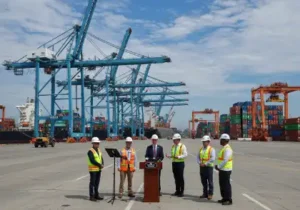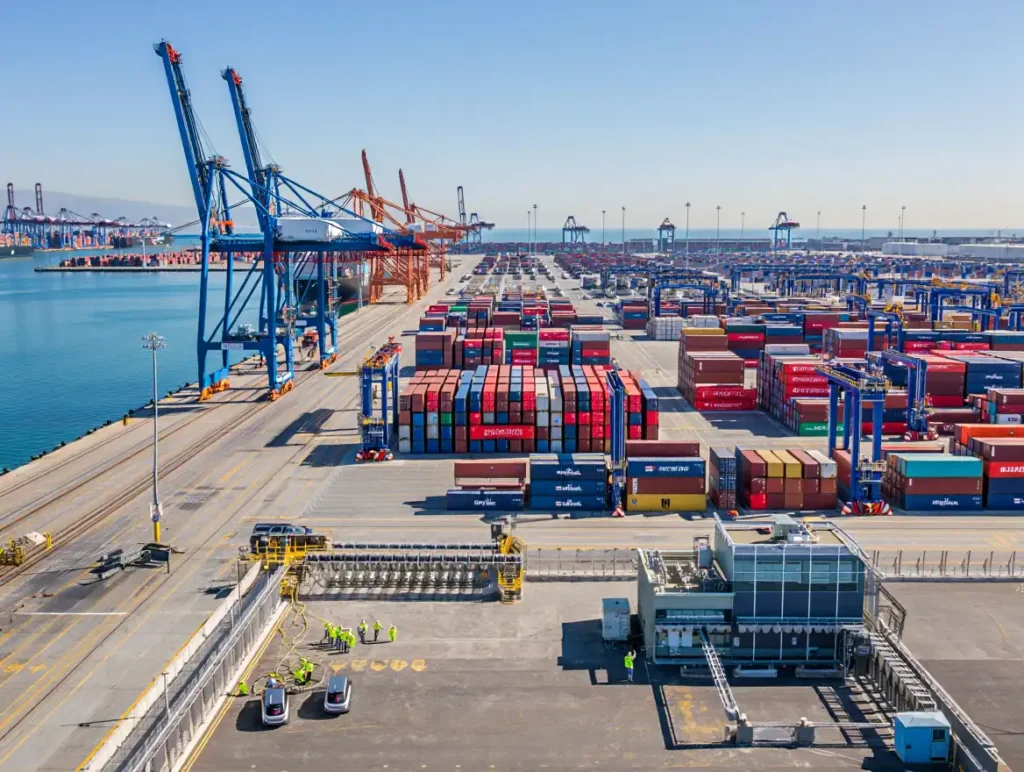Introduction
California is taking a groundbreaking step toward sustainability and economic growth with its ambitious port electrification initiative. Backed by a federal grant exceeding $1 billion, this plan aims to transform the state’s major shipping hubs into zero-emission, fully electrified operations. Beyond environmental benefits, this shift promises to create thousands of green jobs, boost clean technology adoption, and solidify California’s leadership in the global clean energy movement.
Why Port Electrification Matters
Ports are vital economic engines for California, handling massive cargo volumes and supporting global trade. However, they are also significant sources of air pollution due to heavy diesel use from ships, trucks, and cargo-handling equipment. This pollution disproportionately impacts nearby communities, often low-income neighborhoods already facing environmental health risks.
Electrifying port operations addresses both environmental justice and climate goals. By replacing diesel-powered equipment with electric alternatives, the state can cut harmful emissions, improve air quality, and reduce greenhouse gases.
The Federal Grant and Statewide Impact
 In early 2025, the U.S. Department of Transportation awarded California more than $1 billion to accelerate port decarbonization projects. The funding will be distributed across key hubs such as the Port of Los Angeles, Port of Long Beach, and Port of Oakland.
In early 2025, the U.S. Department of Transportation awarded California more than $1 billion to accelerate port decarbonization projects. The funding will be distributed across key hubs such as the Port of Los Angeles, Port of Long Beach, and Port of Oakland.
- Port of Los Angeles: Installation of shore power infrastructure for container ships.
- Port of Long Beach: Expansion of electric drayage truck fleets and fast-charging stations.
- Port of Oakland: Upgrades to electric cargo-handling equipment and battery storage systems.
According to state officials, the initiative could generate over 20,000 direct and indirect jobs in construction, manufacturing, engineering, and maintenance. These positions span from high-skilled technical roles to entry-level opportunities, offering pathways into the clean energy economy.
Economic Benefits of Green Job Creation
Investments in port electrification do more than reduce emissions—they stimulate economic growth. Green jobs in California tend to pay higher-than-average wages and often come with better long-term stability, especially in sectors like renewable energy, infrastructure maintenance, and advanced manufacturing.
Additionally, developing a skilled workforce for these jobs positions California as a hub for green technology innovation. This attracts further investment from companies seeking to develop and test cutting-edge clean energy solutions in real-world environments.
Environmental Justice and Community Health
Communities surrounding California’s ports have historically suffered from elevated rates of asthma, heart disease, and other pollution-related illnesses. Port electrification directly addresses these public health concerns by dramatically reducing diesel exhaust and particulate matter.
For residents, this means cleaner air, fewer health risks, and an improved quality of life. It also demonstrates California’s commitment to environmental justice, ensuring that vulnerable communities benefit from state and federal investments.
Technologies Powering the Transition
The port electrification plan will leverage several advanced technologies:
- Shore Power Systems: Allowing ships to plug into the electric grid rather than running diesel engines while docked.
- Electric Drayage Trucks: Emission-free trucks for short-haul cargo transport between ports and nearby warehouses.
- Battery Energy Storage: Ensuring consistent power availability and grid stability for high-demand port operations.
- Automated Electric Cargo Equipment: Cranes, lifts, and forklifts powered entirely by electricity.
These technologies not only cut emissions but also improve operational efficiency, reducing fuel costs and maintenance downtime.
Challenges Ahead
While the benefits are clear, port electrification faces logistical and financial hurdles. Upgrading infrastructure at such a large scale requires careful planning to avoid disrupting port operations. The initial costs for equipment, installation, and workforce training are significant, although they are expected to pay off through long-term savings and environmental benefits.
Coordination among federal, state, and local agencies, along with private sector partners, is essential to keep projects on schedule and within budget.
Global Significance
California’s leadership in port electrification sets a precedent for other regions worldwide. As one of the busiest trade hubs in North America, the state’s success could inspire similar projects in Asia, Europe, and Latin America, multiplying the environmental and economic impacts on a global scale.
By acting now, California positions itself as both a climate leader and a competitive player in the emerging clean energy economy.
Conclusion
California’s port electrification initiative is more than an infrastructure upgrade—it’s a blueprint for a cleaner, more prosperous future. By investing over $1 billion into zero-emission operations, the state is reducing pollution, creating high-quality jobs, and setting an example for sustainable economic growth. For California residents, this means healthier communities, stronger industries, and a continued legacy of environmental leadership.

